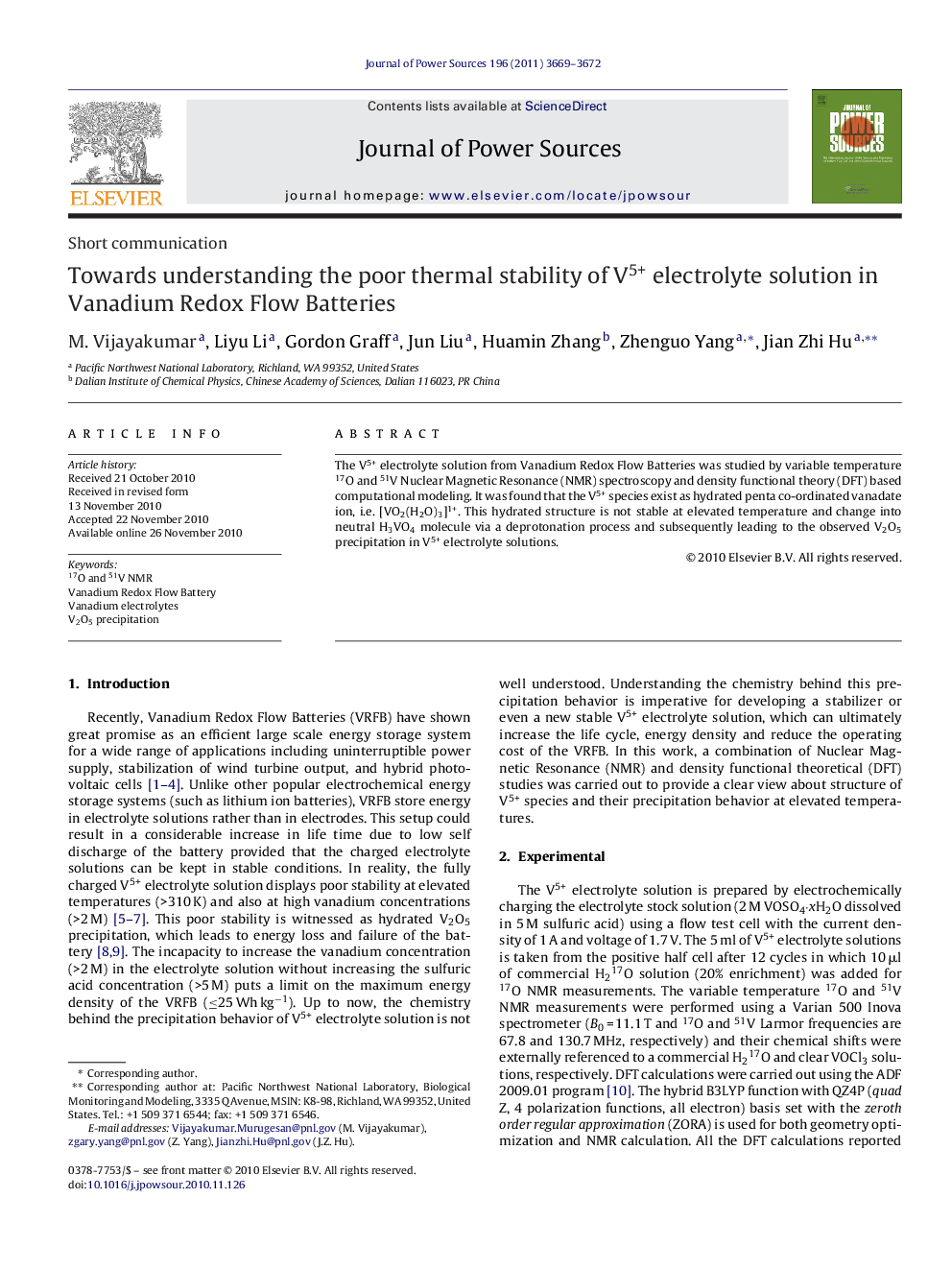| Article ID | Journal | Published Year | Pages | File Type |
|---|---|---|---|---|
| 1288631 | Journal of Power Sources | 2011 | 4 Pages |
The V5+ electrolyte solution from Vanadium Redox Flow Batteries was studied by variable temperature 17O and 51V Nuclear Magnetic Resonance (NMR) spectroscopy and density functional theory (DFT) based computational modeling. It was found that the V5+ species exist as hydrated penta co-ordinated vanadate ion, i.e. [VO2(H2O)3]1+. This hydrated structure is not stable at elevated temperature and change into neutral H3VO4 molecule via a deprotonation process and subsequently leading to the observed V2O5 precipitation in V5+ electrolyte solutions.
Research highlights▶ V5+ solution's Poor stability is a hurdle in development of Vanadium Redox Battery. ▶ Up to now there is no clear explanation for the poor stability of V5+ solution. ▶ This study explains V5+ specitation related to stability using NMR and DFT. ▶ It is found that de-protonation reaction in V5+ cation leads to V2O5 precipitation.
